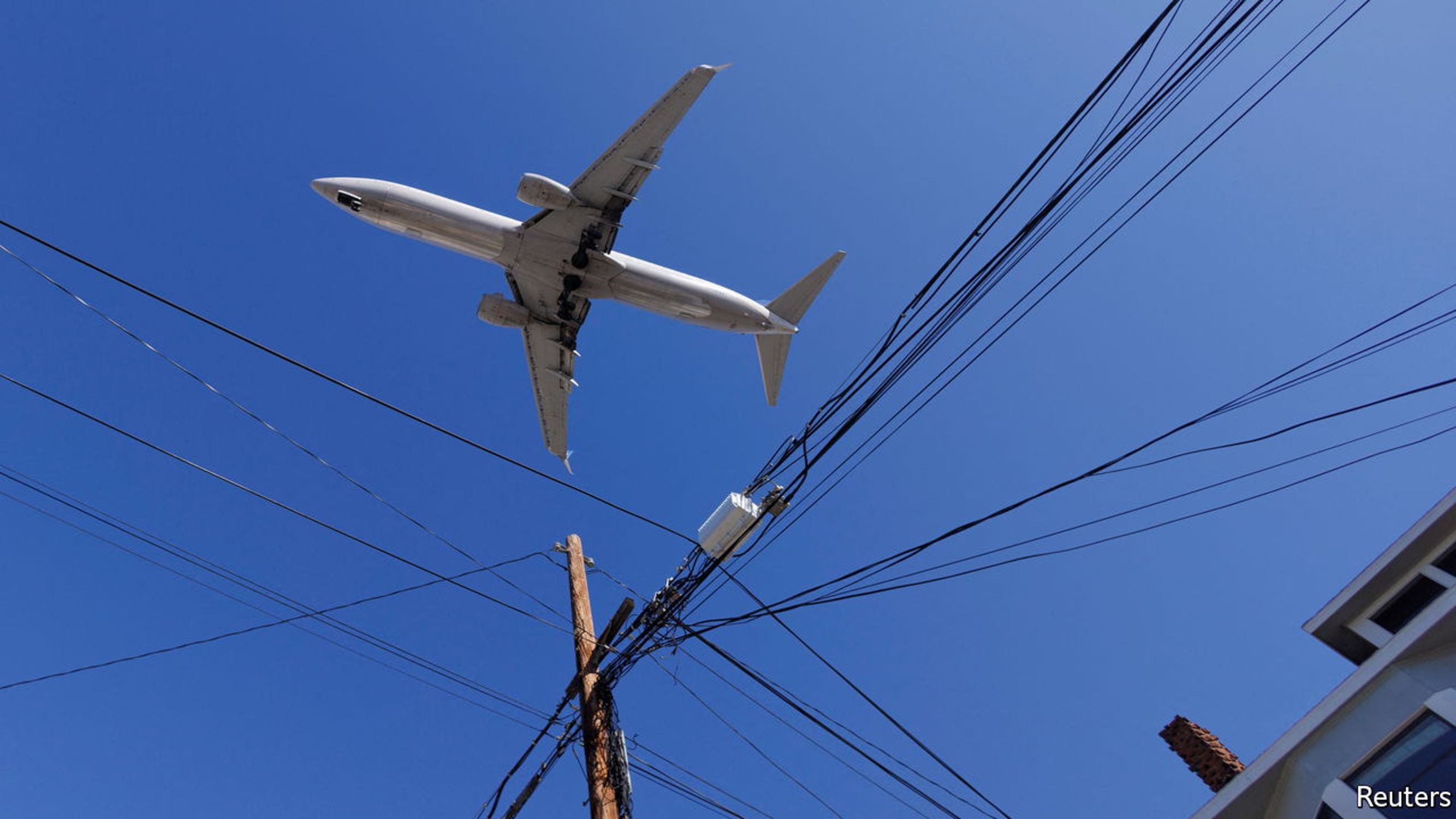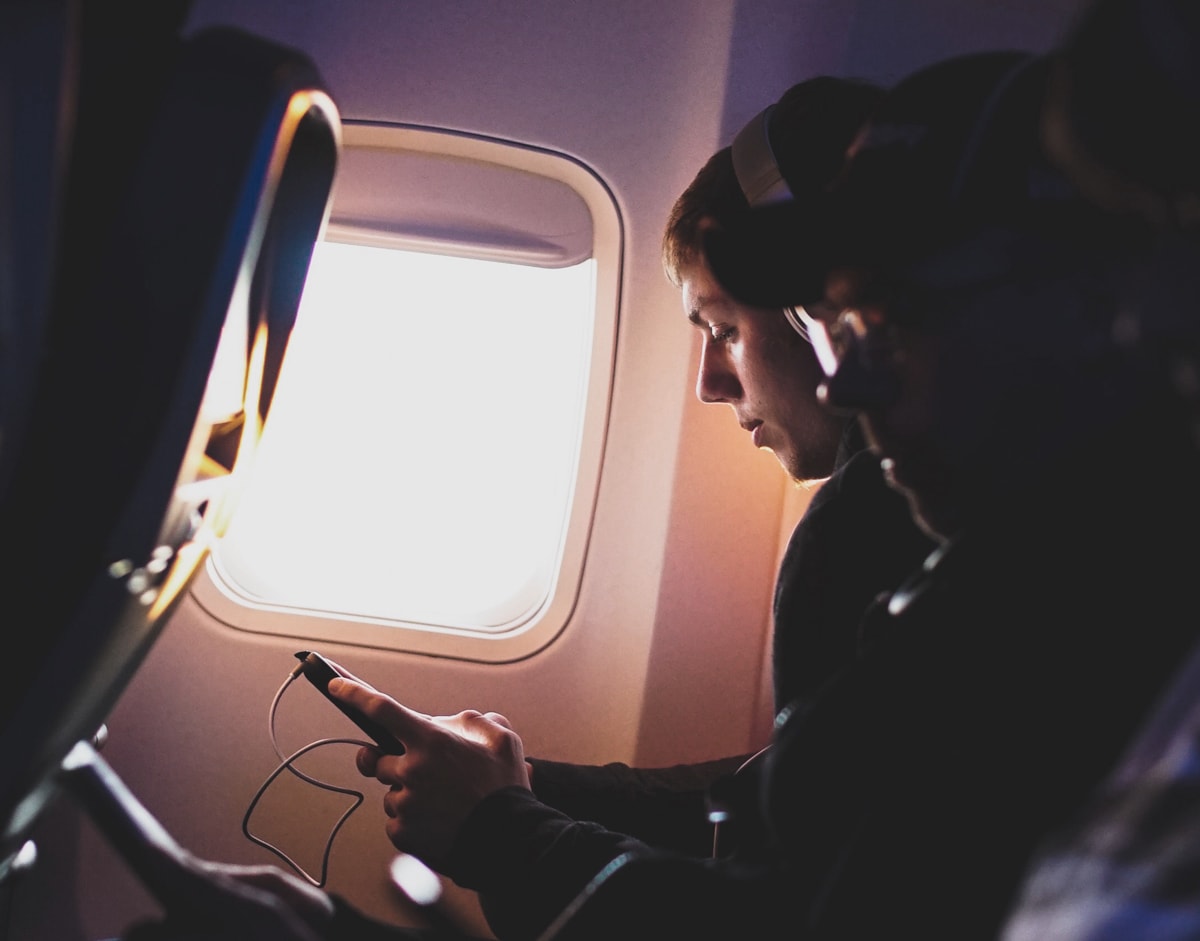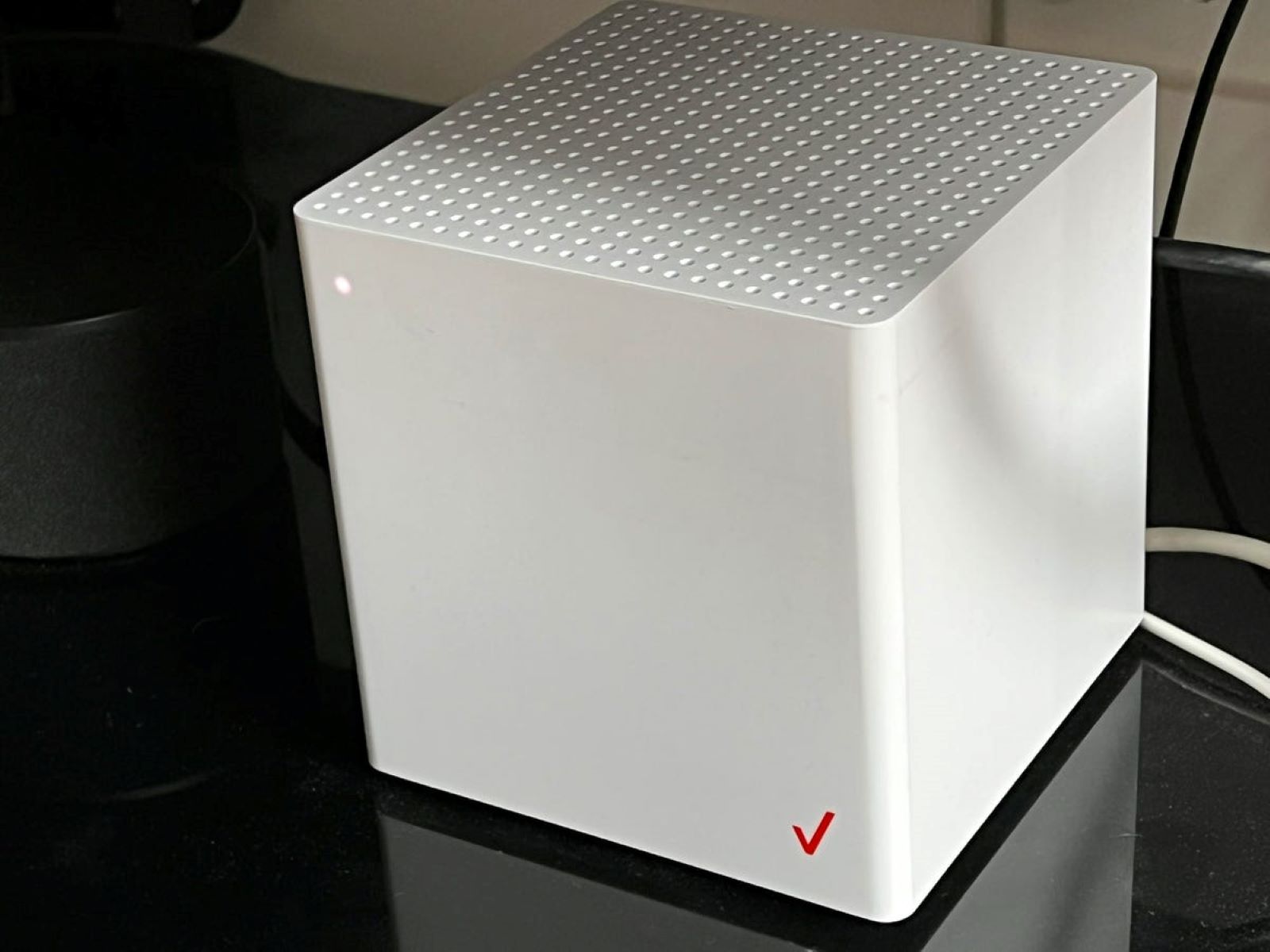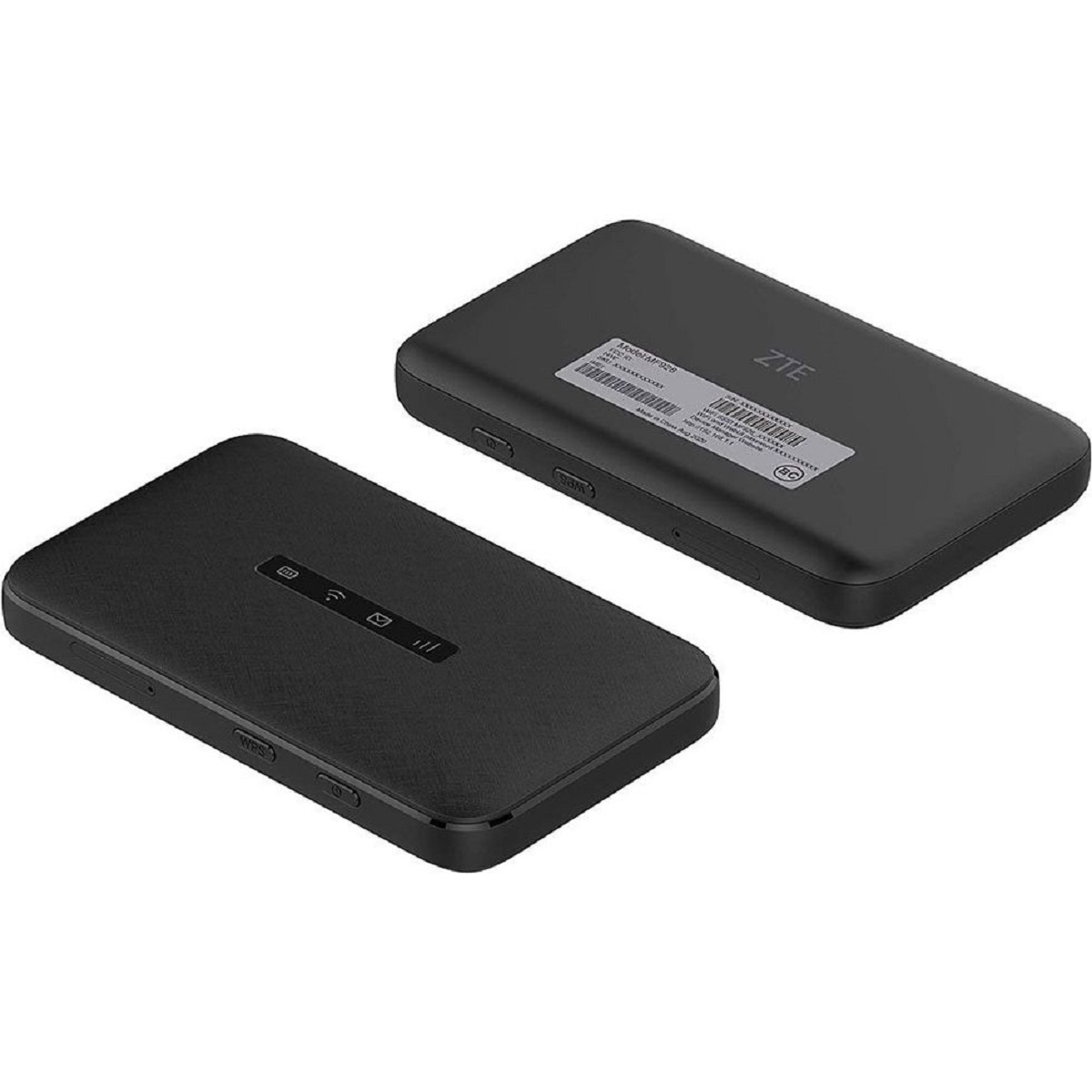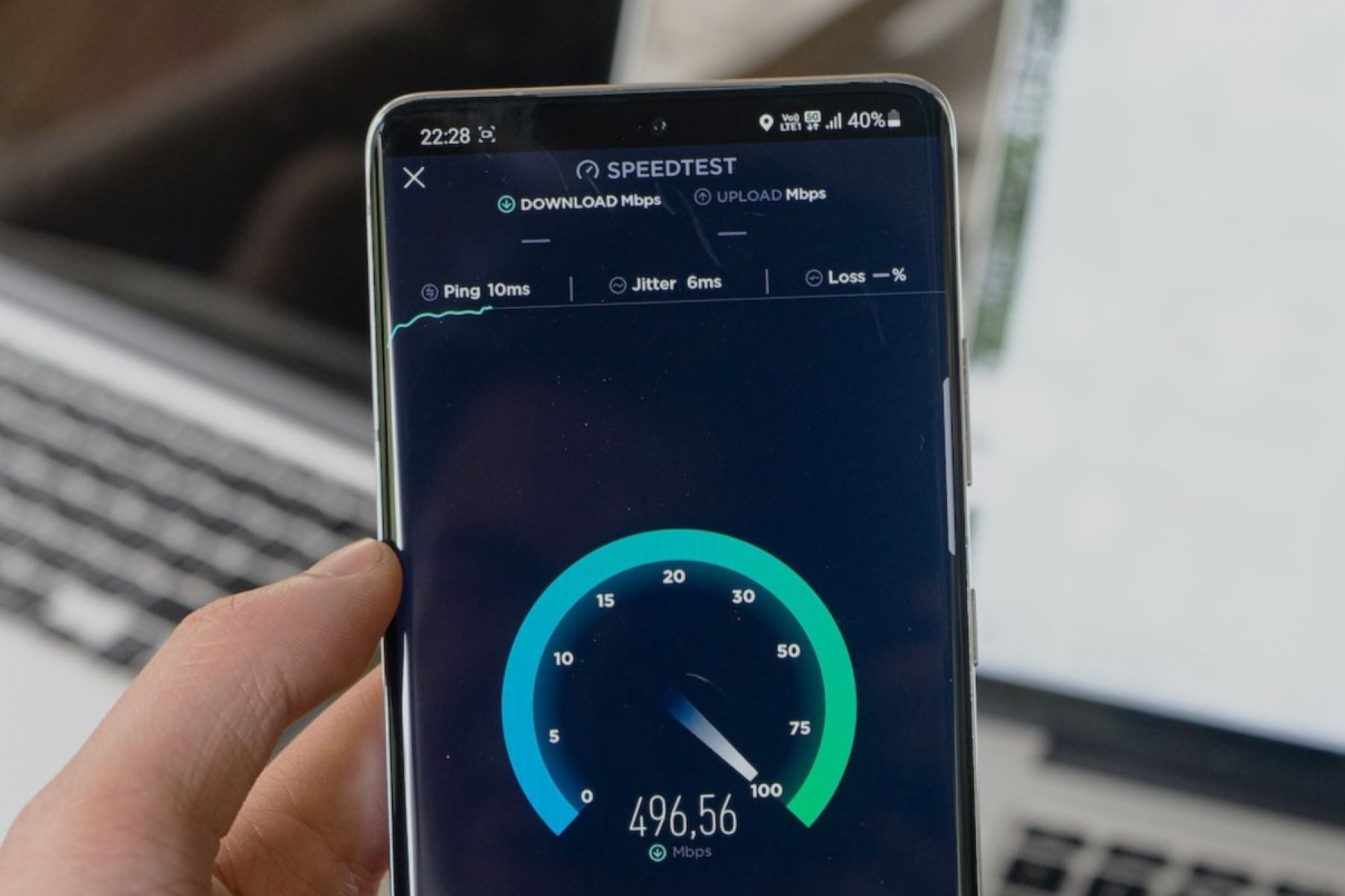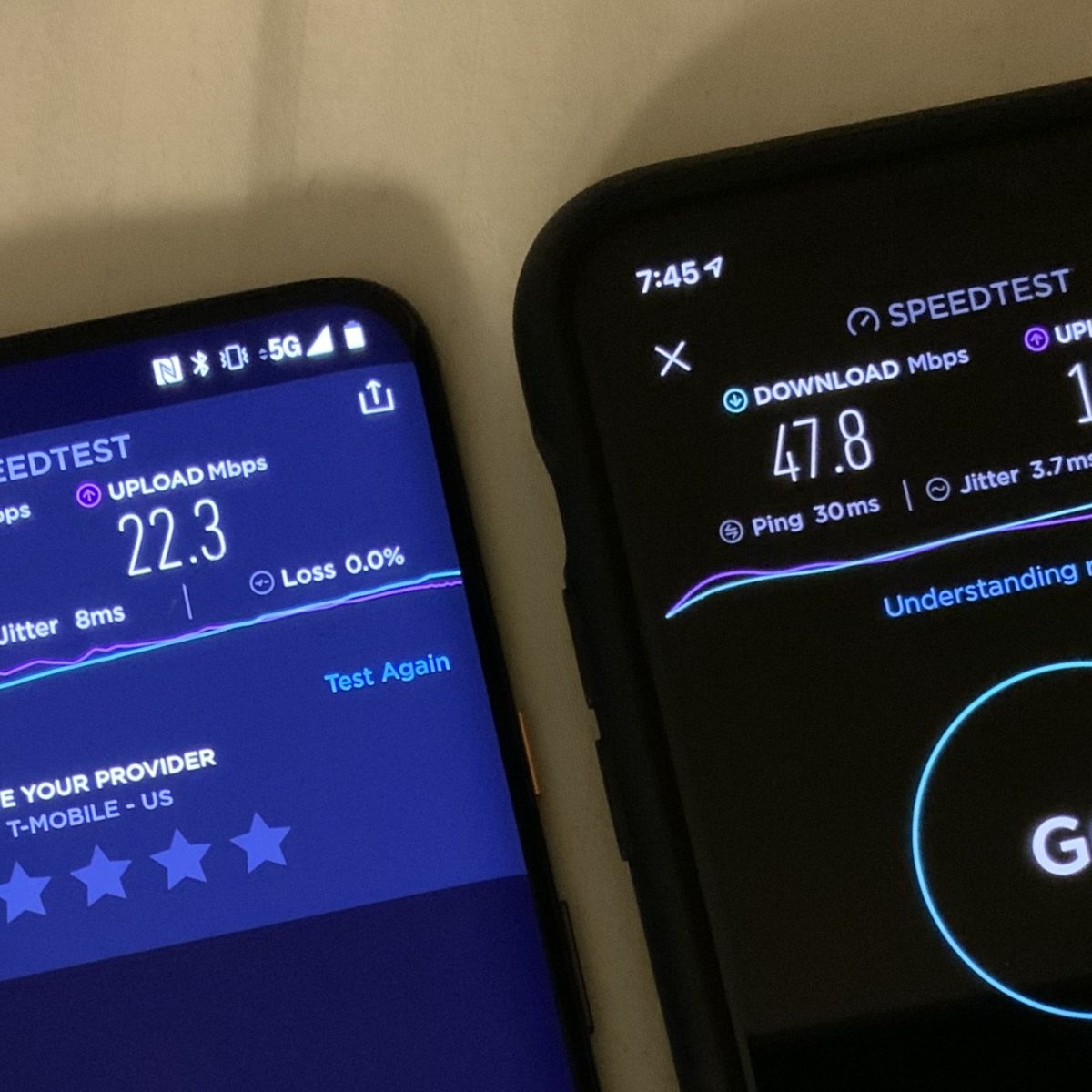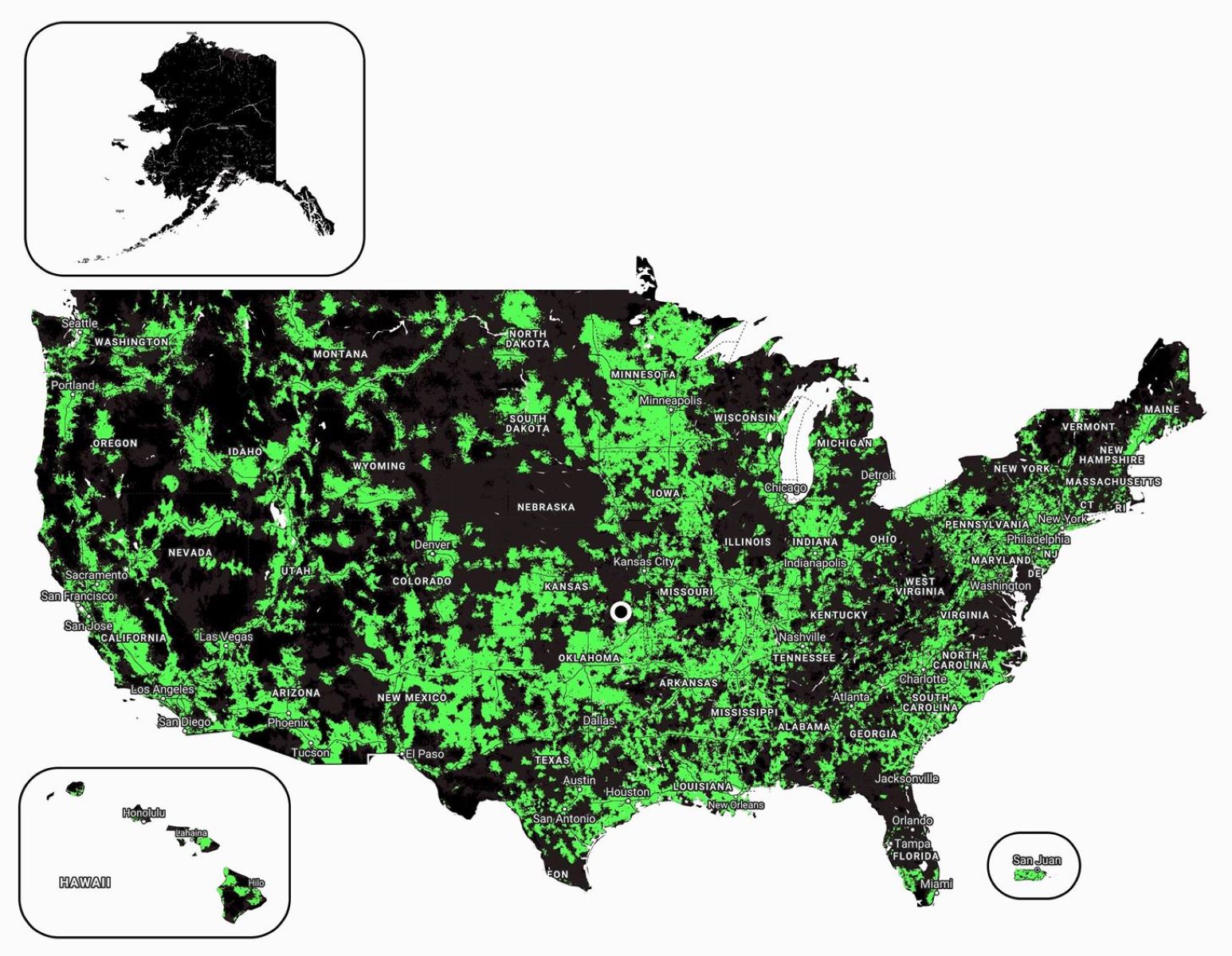Introduction
The introduction of 5G technology has brought about numerous advancements and opportunities across various industries. However, with each technological leap, there are potential impacts that must be considered. One sector facing potential challenges due to the implementation of 5G is the aviation industry, specifically airlines. As 5G networks continue to expand, airlines are beginning to assess and adapt to these potential effects on their operations, systems, and safety measures.
Before diving into the impact of 5G on airlines, it’s important to understand what 5G technology actually is. 5G, or the fifth generation of wireless communication, is the latest and most advanced standard in mobile technology. It offers faster download and upload speeds, lower latency, and the ability to connect more devices simultaneously. This revolutionary network promises to bring immense benefits to businesses and individuals alike, powering innovations such as autonomous vehicles, smart cities, and the Internet of Things (IoT).
The implementation of 5G relies on new and higher frequency bands, including the millimeter wave spectrum. These higher frequencies provide greater data capacity and faster speeds, but they also have limitations, such as reduced propagation distance and potential for interference with other systems. It’s these limitations that have brought about concerns regarding the impact of 5G on airlines.
As airlines heavily rely on communication and navigation systems for safe and efficient operations, any interference or disruption can have significant consequences. Consequently, it is critical for the aviation industry to fully understand and address the potential impacts of 5G technology on aircraft systems and operations. This is essential to ensure the continued safety and reliability of air travel for passengers and crew alike.
What is 5G?
5G, or the fifth generation of wireless communication, is the latest and most advanced standard in mobile technology. It represents a significant leap forward from its predecessor, 4G, in terms of speed, capacity, and connectivity. With 5G, users can expect faster download and upload speeds, lower latency, and the ability to connect more devices simultaneously. This groundbreaking network technology has the potential to revolutionize industries and pave the way for a more connected and digitally-driven future.
One of the key features of 5G is its use of higher frequency bands, including the millimeter wave spectrum. These higher frequencies provide greater data capacity and faster speeds. However, they also have limitations in terms of range and penetration. Unlike 4G, which primarily relied on lower frequency bands that can travel longer distances and penetrate obstacles like buildings, 5G requires a denser network of small cell towers to ensure broader coverage. This densification allows for faster and more reliable connections, particularly in densely populated areas where demand for data is high.
In addition to faster speeds, 5G promises to unlock new opportunities and capabilities through its support for massive machine-to-machine communication. This enables the Internet of Things (IoT) to flourish, connecting a vast array of devices, sensors, and objects to the internet. With 5G, autonomous vehicles can communicate with each other and with the surrounding infrastructure in real-time, enabling safer and more efficient transportation. Smart cities can rely on 5G to power various applications, such as intelligent transportation systems, smart grid management, and remote healthcare services.
Overall, 5G is poised to revolutionize the way we live, work, and interact with technology. Its increased speed and capacity will open doors to innovations and applications that were previously unimaginable. However, as with any technological advancement, it is essential to understand and address any potential challenges and impacts that it may bring. This includes considering the potential effects of 5G on the aviation industry, specifically airlines and their systems and operations.
How Does 5G Work?
To fully understand the potential impact of 5G on airlines, it is important to delve into how this technology actually works. 5G networks operate on a complex infrastructure that involves a combination of hardware, software, and advanced communication protocols. At its core, 5G aims to provide faster speeds, lower latency, and increased connectivity by utilizing new frequency bands and network architecture.
The primary technological components that enable 5G are small cell towers, massive multiple-input multiple-output (MIMO) systems, and advanced signal processing algorithms. Unlike 4G networks that rely on large cell towers spread far apart, 5G networks make use of a dense network of small cell towers closely located to each other. This densification allows for better coverage, especially in urban areas with higher population density and data demand.
Massive MIMO systems are another crucial element of 5G. These systems involve deploying a larger number of antennas at both the base stations and user devices. By utilizing multiple antennas, 5G can transmit and receive data more efficiently, increasing capacity and improving signal quality. This helps to reduce congestion and ensures faster and more reliable connections for users.
Furthermore, 5G networks leverage advanced signal processing algorithms to improve the overall performance and efficiency of the system. These algorithms optimize the use of available radio resources and mitigate interference, ensuring an optimal user experience. Additionally, 5G employs dynamic spectrum sharing, allowing different operators and services to share the same frequency band dynamically, maximizing the efficient use of available spectrum resources.
In terms of frequency bands, 5G utilizes a wider range compared to previous generations of wireless technology. While lower frequency bands offer greater coverage and penetration, they may not deliver the full speed potential of 5G. Hence, higher frequency bands, such as those in the millimeter wave spectrum, are used to achieve ultra-fast speeds and high-capacity data transmission. However, it is important to note that the range of these higher frequencies is limited, requiring a denser network infrastructure.
Overall, 5G technology combines small cell towers, massive MIMO systems, advanced signal processing algorithms, and a wide range of frequency bands to deliver faster speeds, lower latency, and improved connectivity. This sophisticated infrastructure forms the foundation for the advancements that 5G brings, but it also introduces potential challenges and concerns, particularly in highly regulated industries such as the aviation sector.
Impact of 5G on Airlines
The implementation of 5G technology has the potential to impact various aspects of the aviation industry, from aircraft communication systems to safety measures. As 5G networks continue to expand, airlines are evaluating and addressing the potential effects on their operations and systems.
One of the primary concerns regarding the impact of 5G on airlines is the potential interference with critical aircraft communication systems. These systems, such as the Aircraft Communications Addressing and Reporting System (ACARS) and the Automatic Dependent Surveillance-Broadcast (ADS-B), rely on radio frequencies for essential data exchange between aircraft and ground control. Any interference or disruption to these frequencies could pose a safety risk and hinder reliable and accurate communication between aircraft and air traffic control.
Another area of concern is the potential for electromagnetic interference with avionics systems. Avionics, including navigation systems and flight control systems, are vital for the safe operation of aircraft. 5G technology, which operates on higher frequency bands, has the potential to interfere with the sensitive equipment onboard aircraft, potentially compromising the reliability and functionality of these critical systems.
Additionally, the densification of 5G networks, with the increased number of small cell towers, could lead to a higher density of radio frequency signals in the vicinity of airports. This increased signal density may interfere with ground-based aircraft surveillance systems and communication equipment, potentially causing disruptions in airport operations.
Moreover, the implementation of 5G may require modifications or enhancements to existing aircraft equipment and systems to ensure compatibility and optimal performance. This could potentially entail significant investments and operational changes for airlines, resulting in additional costs and logistical challenges.
It’s important to note that the impact of 5G on airlines is not solely negative. 5G technology also offers opportunities for airlines to enhance their services and operations. For example, it can enable faster and more reliable in-flight Wi-Fi access and communication for passengers, improving the overall inflight experience. Additionally, 5G connectivity can enhance aircraft maintenance systems, allowing for real-time monitoring and diagnostics, leading to more efficient aircraft maintenance and reduced downtime.
To mitigate the potential impacts of 5G on airlines, collaboration and coordination between aviation authorities, telecommunications companies, and airlines are crucial. It is essential to conduct thorough testing, assessments, and regulatory measures to ensure that 5G implementation does not compromise the safety and reliability of the aviation industry.
Interference with Aircraft Communication Systems
One of the primary concerns surrounding the impact of 5G on airlines is the potential interference with critical aircraft communication systems. These systems, such as the Aircraft Communications Addressing and Reporting System (ACARS) and the Automatic Dependent Surveillance-Broadcast (ADS-B), rely on specific radio frequencies for essential data exchange between aircraft and ground control.
The radio frequency spectrum is a limited resource, carefully allocated and regulated to ensure the smooth and reliable operation of various systems. As 5G networks expand and utilize higher frequency bands, there is a risk of interference with these allocated frequencies for aircraft communication. Any disruption or interference poses a safety risk and can hinder the crucial communication between aircraft and air traffic control.
Interference from 5G signals could result in degraded or disrupted communication, leading to inaccurate position reporting, missed instructions, or delayed information exchange. This, in turn, could impact the overall efficiency and safety of air traffic management.
To address these concerns, aviation authorities and telecommunication regulators are working together to ensure that the implementation of 5G does not compromise the integrity of aircraft communication systems. This involves conducting thorough analysis and testing to assess potential interference risks, creating regulations and standards to mitigate these risks, and coordinating with telecommunication companies to ensure proper frequency allocation and management.
Furthermore, aircraft systems need to be equipped with robust shielding and interference mitigation techniques to minimize the impact of potential 5G interference. Design modifications and upgrades may be necessary to ensure that aircraft communication systems remain reliable and immune to unwanted external signals.
Overall, the interference with aircraft communication systems due to the implementation of 5G is a critical concern that requires careful attention and collaboration between aviation and telecommunication stakeholders. By addressing these potential issues proactively and ensuring the compatibility and reliability of aircraft communication systems, the aviation industry can continue to operate safely and efficiently in the era of 5G technology.
Safety Concerns of 5G for Airlines
The implementation of 5G technology in close proximity to airports and aircraft operations raises important safety concerns for the aviation industry. As 5G networks utilize higher frequency bands, there are potential risks associated with electromagnetic interference and the impact on avionics systems.
Avionics systems, including navigation and flight control systems, are critical to the safe operation of aircraft. These systems rely on precise and reliable data to ensure accurate navigation, guidance, and control. However, 5G signals operating in close proximity to aircraft have the potential to interfere with these sensitive systems, compromising their functionality and introducing safety risks.
To address these concerns, thorough testing and analysis must be conducted to assess the potential impact of 5G on avionics systems. Additionally, stringent regulatory standards and certification processes need to be established to ensure that aircraft equipment and systems are immune to interference from 5G signals.
Another safety concern arises from the densification of 5G networks. The increased number of small cell towers deployed in close proximity to airports can create a higher density of radio frequency signals. These signals have the potential to interfere with ground-based aircraft surveillance systems, such as radar, and communication equipment. Such interference can disrupt crucial air traffic management operations and compromise the safety of airport operations.
Furthermore, the aviation industry must also consider the potential impact of 5G on radio altimeters. Radio altimeters are critical instruments that provide vital information on an aircraft’s altitude above the ground. The high-frequency signals used by 5G technology may interfere with the accurate operation of these altimeters, potentially leading to unreliable altitude readings and compromising flight safety during approach and landing phases.
Mitigating these safety concerns requires close cooperation and collaboration between aviation authorities, telecommunication regulators, and aircraft manufacturers. It is essential to establish comprehensive safety standards and guidelines that address the potential risks associated with 5G implementation. Rigorous testing and certification procedures must be in place to ensure the compatibility and non-interference of aircraft systems with 5G signals.
By addressing these safety concerns and taking appropriate measures to mitigate risks, the aviation industry can ensure the continued safety and reliability of air travel in the face of advancing 5G technology.
Potential Solutions to Minimize Interference
Minimizing the potential interference between 5G and aircraft communication and navigation systems requires a comprehensive approach involving collaboration between aviation authorities, telecommunication regulators, and industry stakeholders. Here are some potential solutions to help mitigate interference and ensure the safe and reliable operation of airlines:
1. Frequency Spectrum Allocation: Aviation authorities and telecommunication regulators should work together to allocate and manage the frequency spectrum in a way that minimizes the risk of interference. This involves creating clear boundaries and regulations to ensure that 5G networks and aircraft communication systems operate on separate and non-overlapping frequencies.
2. Rigorous Compatibility Testing: Aircraft manufacturers should conduct rigorous testing and certification processes to ensure that aircraft systems are immune to interference from nearby 5G signals. This includes shielding and isolation measures to protect sensitive avionics systems from external electromagnetic interference.
3. Enhanced Aircraft Systems: Upgrading and enhancing aircraft systems to improve their resiliency against interference can contribute to minimizing the potential impact of 5G. This could involve the integration of advanced filtering techniques and signal processing algorithms that mitigate interference from external sources.
4. Improved Cooperation: Collaboration between aviation authorities, telecommunication companies, and airlines is vital to address potential interference issues. Sharing knowledge, research findings, and best practices can help develop effective strategies and solutions to minimize interference and ensure the safety and reliability of aircraft operations.
5. Heightened Regulation and Compliance: Regulatory bodies should establish stringent standards, guidelines, and compliance measures to ensure that 5G networks deployed near airports adhere to the necessary safety requirements. This includes conducting thorough assessments of 5G infrastructure to ensure it does not pose risks to aviation systems.
6. Continuous Monitoring and Evaluation: Ongoing monitoring and evaluation of the impact of 5G on aircraft systems is crucial. This will involve regular testing, data collection, and analysis to identify any potential interference or safety risks. Industry collaboration and information sharing will play a vital role in this ongoing monitoring process.
By implementing these potential solutions, the aviation industry can proactively address the challenges posed by 5G technology and minimize interference with aircraft communication and navigation systems. The collective efforts of stakeholders from both the aviation and telecommunications sectors are essential to ensure the continued safety, reliability, and efficiency of air travel in the era of 5G.
Conclusion
The implementation of 5G technology has the potential to bring numerous benefits and advancements to various industries, including the aviation sector. However, it also raises concerns and potential challenges for airlines, particularly in terms of interference with aircraft communication systems and safety measures.
To mitigate these potential impacts, collaboration and cooperation between aviation authorities, telecommunication regulators, and industry stakeholders are crucial. It is essential to allocate and manage frequency spectrum effectively, conduct rigorous testing, and enhance aircraft systems to ensure compatibility and minimize interference. This requires continuous monitoring, evaluation, and adherence to stringent safety standards.
Addressing the potential interference between 5G and aircraft systems is vital to maintain the safety, reliability, and efficiency of air travel. By working together, the aviation and telecommunications industries can develop robust solutions that enable the uptake of 5G while safeguarding the integrity of critical aircraft communication and navigation systems.
As 5G continues to evolve and expand, the aviation industry must remain vigilant and proactive in adapting to its potential impacts. By embracing innovative solutions and maintaining a strong focus on safety, airlines can leverage the benefits of 5G technology to enhance their operations and provide an improved inflight experience for passengers, all while ensuring the continued safety and reliability of air travel.







